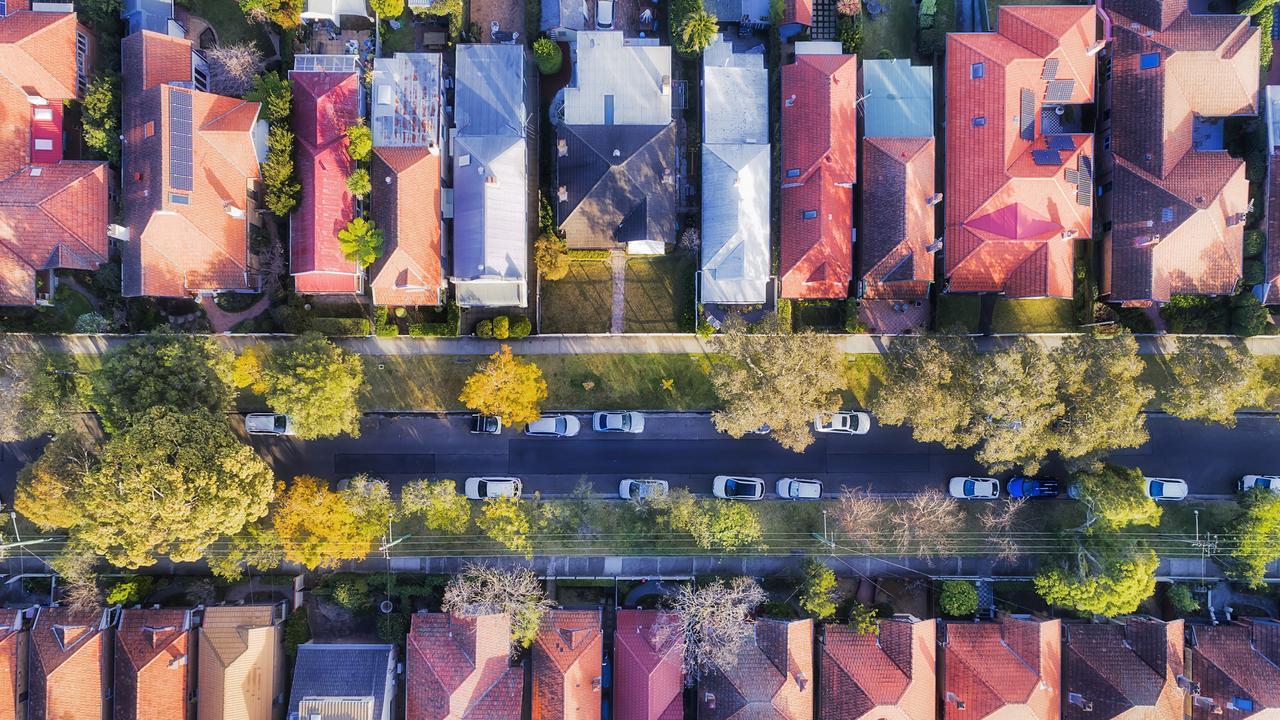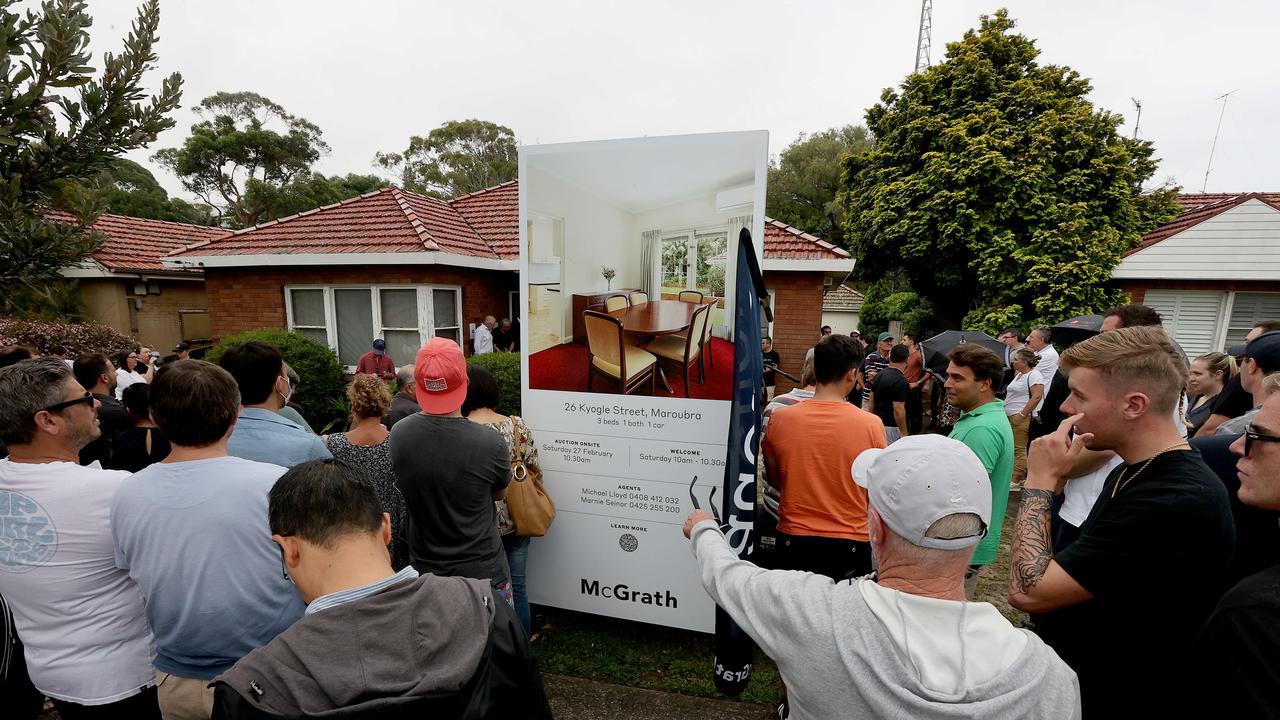Aussie property values climbing at fastest rate in 17 years as Sydney, Melbourne on track to beat record
Australia’s property market is booming, with prices rising at the fastest rate since 2003. This is how far values could rise in 2021.
Australia’s already eye-watering property prices have skyrocketed yet again, with new data revealing values are rising at the highest level since 2003.
According to the latest CoreLogic data, values surged 2.1 per cent higher in February, the largest month-on-month change in 17 years.
Experts say the jump has been caused by a mix of factors including record low mortgage rates, improving economic conditions, government incentives and low supply levels.
Sydney and Melbourne were among the strongest performing markets, recording a 2.5 per cent and 2.1 per cent lift in home values over the month respectively.
Some smaller cities were big winners though, with Darwin housing values rising 5.5 per cent over the past three months, Hobart values climbing 4.8 per cent and Perth up 4.2 per cent.
But while the trend was seen in every capital city, it was also apparent across state regions.
CoreLogic’s research director Tim Lawless said a synchronised growth phase like this hasn’t been seen in Australia for more than a decade.
“The last time we saw a sustained period where every capital city and the rest of state region was rising in value was mid-2009 through to early 2010, as [a result of] post-GFC stimulus-fuelled buyer demand,” he said.
“Whether this new-found growth in Sydney and Melbourne can be sustained is unclear. Both cities are still recording values below their earlier peaks, however at this current rate of appreciation it won’t be long before Australia’s two most expensive capital city markets are moving through new record highs.
“With household incomes expected to remain subdued and stimulus winding down, it is likely affordability will once again become a challenge in these cities.”
RELATED: New rules for ‘buy now, pay later’

At the moment, Sydney’s median property value, including both units and houses, is now a staggering $895,933, with Melbourne hot on its heels at $717,767, followed by Canberra at $706,454.
But Mr Lawless predicted Sydney and Melbourne prices could surpass the record highs set in 2017 within weeks.
“At the moment if you look at the growth rates at face value, the annualised trend looks to be getting up to around the 16 per cent mark nationally,” he said.
“But I don’t think it will rise that much – I think the rate will slow down at least in the second part of this year, simply because of affordability constraints weighing on the market preventing some people [from purchasing].”
In other words, values are unlikely to keep climbing at the same huge rate in our least affordable cities, as it would simply end with people walking away from the market altogether.
However, Mr Lawless said Sydney and Melbourne still had a way to go before that happened.
“Sydney prices are still a bit lower than they were back in 2017 – they are around 1.1 per cent below that previous peak in July 2017,” he said.
“At this rate, it will only be a month or two before we see those markets pressing to new record highs.”
RELATED: One month to economic carnage

He said realistically, prices were likely to end around 10 per cent higher nationally during this calendar year, although smaller markets like Perth, Darwin and Brisbane were likely to perform more strongly.
That’s because those cities don’t face the same affordability problem, are less susceptible to migration flux and are more appealing to investors.
Mr Lawless said while industry insiders were previously predicting dramatic house price falls around a year ago as the pandemic and recession unfolded, the signs had been clear that a boom was coming for some time now.
“We’re seeing economic improvement well beyond what was forecast in terms of the speed of economic recovery, so there has been a gradual change in expectations,” he said.
“What’s most surprising is how pessimistic we were in March and April about how well we would navigate the storm as a country and economy.”
Mr Lawless said current stimulus measures such as HomeBuilder and stamp duty concessions had sparked a surge in first homebuyer activity, but said raising a deposit and covering the transactional costs of buying were the biggest challenges for younger Australians entering the market.
Meanwhile, the January 2021 Lending to Households and Business figures released today by the Australian Bureau of Statistics (ABS) reveal the value of new loan commitments for housing grew for the eighth month in a row and hit another record high, according to the Real Estate Institute of Australia (REIA).
“The seasonally adjusted value of new loan commitments for owner occupier housing rose 10.5 per cent in January and 44.3 per cent for the 12 months, [with] rises being seen in all states and territories with the exception of the Northern Territory,” REIA president Adrian Kelly said.
“The value of new loan commitments to owner-occupiers rose 10.9 per cent, the largest monthly increase since August 2020.
“Loans to investors also increased for the eighth consecutive month with the value of loan commitments for investor housing increasing by 9.4 per cent for the month, the largest rise since September 2016, and 22.7 per cent for the year on the back of improving rental market conditions.
“The number of owner-occupier first homebuyer loan commitments increased by 9.6 per cent for the month and is 70.8 per cent higher than 12 months earlier. This is the highest level since May 2009, when the Commonwealth Government’s response to the GFC included the temporary increase in the first homeowner grant.”




